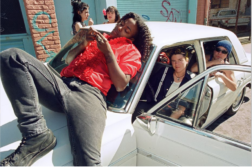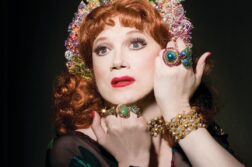DURING THE MANY 25th anniversary celebrations of the Stonewall Riots in 1994, I was somewhat surprised to hear so many people saying they had been there that night in June, 1969. I remember once adding them up and concluding that, if everyone who said they were there, actually had been present, they not only would have taken over Sheridan Square completely, but possibly taken down the municipal government of New York City altogether.
We all want to be part of something historic; it’s human nature. And let’s face it, there really haven’t been that many truly positive and exulting events for LGBT people to want to absorb and make their own. Usually we’re commemorating a death, a disease, something awful. So possibly these hundreds of people mean that they took part in the demonstrations that occurred in and around Sheridan Square on the nights and days following that first night, when gays fought back against the police raiding a bar in Manhattan. And let’s remember there had been raids of gay bars before in which people fought back in one way or another—in Los Angeles, San Francisco, and even in the small town of Pacifica, California.
But for some reason, this particular incident stuck, with the result that a routine bar raid developed into something far larger. A new minority came together in the weeks that followed, and out of that arose an active political movement. First came the Gay Liberation Front, which would be followed by the more active and successful Gay Activist Alliance. Today, we can trace the LBGT political movement in the U.S. back to that one night. We recognize it as, in effect, the Big Bang that created our gay universe.
I realize that these days “history” itself has become a suspect and at times even a moot item of terminology. Like others I’ve heard that histories are “what the winners tell you it is” and that “everyone has a different idea of what a historic event is” and other such truisms. While granting all that, I still believe that trying to discover what actually happened is not a worthless enterprise. True, many who were at or around the Stonewall that night are missing or dead. But others, like myself, are still alive, and over the years some people who happened to be in, at, or in the vicinity of 35 Christopher Street have been generous enough to tell me of their experience. In addition, for this essay, I’ve been lucky enough to hear from other people I did not know, who were in, at, or near the bar that night. Their strong voices speak for themselves.
I’m always a writer, which means that I’m also often a journalist. So here is my Journalism 101 attempt to get at the truth about Stonewall. My “sample” includes three gay men, a transgendered person of color, a lesbian, and a heterosexual woman who lived a few doors away—which I think pretty much matches the population of the area that night. The witnesses are, in alphabetical order: Tom Baker, Rita Mae Brown, “Miss Majors,” Felice Picano, Victoria Roth, and Edmund White.
Some background on my interlocutors:
- Tom Baker worked for years for Grey Advertising in New York and Los Angeles on the Ford account. He was for a short period of time a bartender at the Village gay bar Julius’. Since retiring, he has written and published three books relevant to the Stonewall period: The Sound of One Horse Dancing, Full Frontal, and Paperwhite Narcissus.
- Rita Mae Brown is the celebrated author of the groundbreaking lesbian novel Rubyfruit Jungle, as well as Six of One, both of which deal with that early period of feminist-lesbian America; she is also the author of many beloved mystery novels.
- Miss Majors is a transgender African-American woman who now lives and works in Oakland, California.
- Victoria Roth is a classical pianist, chamber musician and music teacher.
- Edmund White is the renowned author of novels, memoirs, plays, and biographies, including the memoir My New York and the novel The Beautiful Room is Empty, both of which deal with this era.
- My own books relevant to 1960s New York include the memoirs Men Who Loved Me and True Stories: Portraits from My Past.
I’ve asked these five people, and myself, five basic questions. 1. How did you happen to be there that night? 2. What did you think was happening at the time? 3. Did you have any idea that history was being made? 4. What did you think in the days after it happened? and 5. Does any detail stand out for you, even now, years later?
— Felice Picano
Felice Picano’s latest book is a memoir titled Nights at Rizzoli (OR Books, 2015).






